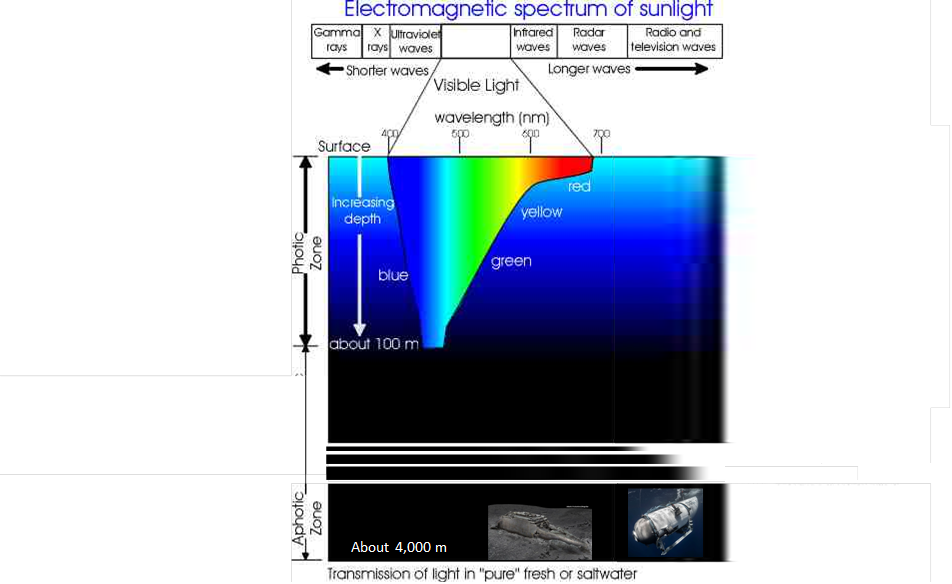
EXPERT REACTION: Submersible visiting Titanic wreck reported missing
Not peer-reviewed: This work has not been scrutinised by independent experts, or the story does not contain research data to review (for example an opinion piece). If you are reporting on research that has yet to go through peer-review (eg. conference abstracts and preprints) be aware that the findings can change during the peer review process.
A submersible craft carrying five people, that was being used to visit the wreck of the Titanic, has been reported missing. Efforts are underway to locate the craft that went missing off the coast of south-eastern Canada, and bring it back to safety.
Organisation/s: Australian Science Media Centre
Funder: N/A
News for:
Australia
International
SA
Multimedia:
-
 Electromagnetic spectrum of sunlight under water
Electromagnetic spectrum of sunlight under waterElectromagnetic spectrum of sunlight under water
File size: 227.7 KB
Attribution: Eric Fusil
Permission category: © - Only use with this story
Last modified: 23 Jun 2023 4:41pm
NOTE: High resolution files can only be downloaded here by registered journalists who are logged in.
Media contact details for this story are only visible to registered journalists.


Expert Reaction
These comments have been collated by the Science Media Centre to provide a variety of expert perspectives on this issue. Feel free to use these quotes in your stories. Views expressed are the personal opinions of the experts named. They do not represent the views of the SMC or any other organisation unless specifically stated.